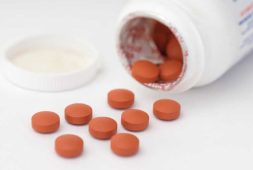
According to the International Diabetes Federation, “Approximately 463 million adults (20-79 years) were living with diabetes.” But what’s even more alarming is that by the year 2045, that number is expected to rise to 700 million.
With such a massive number of people suffering from this chronic and deadly disease, new technology and advanced treatments are always a welcome reprieve for patients looking for easier ways to manage their sickness.
Thankfully, a research group from Australia has been busy coming up with a novel, first-of-its-kind, and better yet, pain-free diabetes test. With funding of $6.4 million to build the facility that will manufacture the device, the Australian Government’s Modern Manufacturing Initiative is funding the world-class facility, hoping to get their product into consumers’ hands in the next few years.
This particular undertaking hopes to bring two decades worth of lab research into the creation of this new product that will finally debut in retail stores to help the over 460 million people that are living with diabetes all over the world.
Physicist and research leader, Professor Paul Dastoor from the University of Newcastle, plans to release the first batch of devices by the year 2023.
Unlike the commonly used finger pricking devices that diabetes patients use to monitor their sugar glucose levels, with some having to prick their fingers multiple times in a single day, this new device involves no more pain. For most diabetes patients, especially children that suffer from this debilitating disease, this brand-new device is highly anticipated.
How the Saliva Glucose Biosensor Works
The device, which is called a saliva glucose biosensor, will no longer require patients to prick their fingers to test their blood levels for either type 1 or type 2 diabetes. Once manufactured in massive amounts and distributed globally, this could possibly make the old blood glucose test kit that was developed back in the 1960s obsolete.
Professor Dastoor explains that much of his inspiration to develop this novel device was due to his wife, a primary school teacher that helps many young children in her care watch over and monitor their blood glucose levels while in school.
According to Prof. Dastoor, “It’s heartbreaking scenario when the lunch bell rings and everyone runs to the playground, bar an unfortunate few who stay back to surrender their finger for blood testing at every meal time.”
“Our vision was to create a world where no one needs to bleed in order to eat,” he adds.
Of course, since saliva glucose concentrations are ‘100 times lower than in blood,’ it wasn’t an easy task to accomplish.
Prof. Dastoor explains, “One of our key challenges was the sheer unavailability of glucose in saliva. It exists in minute concentrations, so you need to develop an incredibly powerful platform to detect it. Saliva also contains a plethora of other substances, so you’ve then got to tune out a lot of ‘noise’ to ensure results are accurate.”
The professor explains that the sensor they created is quite similar to a stick of chewing gum in size, but is significantly thinner. Yet despite its size, it’s very powerful at detecting minute concentrations of other substances that exist in saliva.
Prof. Dastoor shares, “With this highly sensitive platform, we can now detect glucose at the levels found in saliva, for the first time.”
The biosensor, which is coated with a natural enzyme known as Glucose Oxidase, interacts with a person’s saliva which then produces a reaction that brings about an electrical current. This current is then detected and measured to expose the ‘highly accurate glucose levels.’ These levels are sent to a smartphone app and stored in the cloud for future reference.
Other Possible Uses
Professor Dastoor also shares that the sensor could be used in other ways. He explains that it could be developed for application ‘across 130 indications including tumor markers, hormones, and allergens.’
He shares, “The biosensor is a ‘platform technology’, which means it will be widely applicable to detect a variety of substances that identify a range of diseases. We’re already looking for the substances that identify cancer, hormones and allergies.
Furthermore, the sensor could also be used for new types of COVID-19 diagnostic tests that are desperately needed worldwide to help abolish the life-threatening virus. In fact, his team is already partnering with Harvard University’s Wyss Institute for Biologically Inspired Engineering to aid in the development of a sensor platform that won’t be an invasive as the usual testing for COVID-19.
He explains, “The Wyss Institute have developed a clever antifouling coating that can be incorporated into the biosensor platform, offering a new diagnostic tool for COVID-19 that can be printed onto plastic strips at massive scale.”
Professor Dastoor also shares the hope for their incredible breakthrough technology, saying, “To see the biosensor on shelves, changing lives will be immensely satisfying, it’s why we do the work we do.”
To better understand how this impressive new device works, watch the video below.



